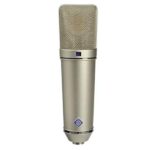Post-hardcore vs metalcore: while sharing some similarities, these closely related rock and heavy metal subgenres have unique traits that set them apart.

In this article, we’ll explain the terms “post-hardcore” and “metalcore,” what they stand for, and highlight their crucial similarities and differences, so let’s jump right in.
Contents
- 1 What is Post Hardcore?
- 2 What Does Post Mean in Music?
- 3 What is Metalcore?
- 4 Why is it Called Metalcore?
- 5 Post Hardcore vs. Metalcore: Key Differences
- 5.1 Post Hardcore vs. Metalcore: Musical Roots
- 5.2 Post Hardcore vs. Metalcore: Aggression and Intensity
- 5.3 Post Hardcore vs. Metalcore: Melodic Elements
- 5.4 Post Hardcore vs. Metalcore: Song Structures
- 5.5 Post Hardcore vs. Metalcore: Lyricism and Themes
- 5.6 Post Hardcore vs. Metalcore: Instrumentation
- 6 Conclusion
What is Post Hardcore?
Post-hardcore is a subgenre of alternative and punk rock that emerged in the 1980s. It combines elements of hardcore punk with alternative rock, emo, and noise rock.
Musically, it features heavy guitar riffs, complex structures, and intense vocals. Lyrically, it explores personal themes, social commentary, and emotional turmoil.
Influential bands include Fugazi, At the Drive-In, Quicksand, and Under Oath.
Post-hardcore has evolved, diversifying into various subgenres within alternative music.
What Does Post Mean in Music?
In music, “post” signifies a genre or movement that follows and builds upon a specific style or era. It represents progress and innovation by incorporating new elements or ideas.
It suggests music that surpasses traditional boundaries and explores new approaches. The prefix “post” emerged in the late 20th century to describe the fusion and evolution of different styles.
For instance, “post-punk” expands on punk with experimental or diverse sounds, while “post-rock” goes beyond traditional rock by incorporating ambient, experimental, and instrumental elements.
“Post” acknowledges the influence of a previous genre while signifying a departure into new musical territories.
It’s often used for genres or movements that defy easy categorization, blending influences to create a unique and innovative sound.
What is Metalcore?
Metalcore is a heavy metal subgenre blending hardcore punk and extreme metal. It combines aggressive vocals, heavy guitar riffs, complex structures, and breakdowns.
Lyrically, it explores personal struggles, social issues, and resilience. Notable bands include Killswitch Engage, As I Lay Dying, and Parkway Drive.
Metalcore has evolved into subgenres like melodic metalcore and mathcore.
Why is it Called Metalcore?
The term “metalcore” combines “metal” and “hardcore” to represent the fusion of metal and hardcore punk in the genre.
Adding “core” signifies metalcore’s connection to the hardcore punk scene, similar to other punk subgenres.
Metalcore was coined in the 1990s; it describes bands that blend hardcore punk’s aggression, intensity, and DIY ethos with metal’s heaviness, technicality, and guitar-driven sound.
The term became popular to categorize this style of music and differentiate it from traditional metal and punk.
Metalcore has since diversified, giving rise to subgenres and variations.
It’s widely recognized and used to describe a specific sound and aesthetic within the broader heavy metal and punk music landscape.
Post Hardcore vs. Metalcore: Key Differences
Post-hardcore and metalcore share some similarities but also have distinct traits. They’re two closely related subgenres of rock and heavy metal with the following differences:
Post Hardcore vs. Metalcore: Musical Roots
Post-hardcore draws heavily from its roots in hardcore punk, which emerged in the late 1970s and early 1980s.
It incorporates elements of punk rock, alternative rock, and emo.
Post-hardcore bands often combine hardcore punk’s aggressive and raw energy with the melodic sensibilities and experimental approach of alternative rock and emo.
On the other hand, metalcore originated in the 1990s as a fusion genre combining elements of hardcore punk with extreme metal.
It draws inspiration from metal subgenres, such as thrash and melodic death metal.
Metalcore bands blend hardcore punk’s aggressive and intense nature with metal’s heaviness, technicality, and guitar-driven sound.
Post Hardcore vs. Metalcore: Aggression and Intensity

Key traits of post-hardcore include aggression and intensity. However, post-hardcore also incorporates dynamic shifts within songs.
It alternates between heavy and melodic sections, contrasting mood and energy.
Vocal styles in post-hardcore can vary widely, including aggressive screamed vocals, melodic singing, clean vocals, and even spoken-word passages.
Conversely, metalcore is consistently heavy and intense throughout songs, maintaining a relentless and aggressive energy.
It often features rapid and heavy guitar riffing, powerful breakdowns, and harsh vocals.
The focus in metalcore is on creating a relentless sonic assault with little variation in intensity throughout a song.
Post Hardcore vs. Metalcore: Melodic Elements
Post-hardcore places less emphasis on prominent melodic elements and focuses more on raw energy and emotive expression.
While the melody is present in some post-hardcore songs, it’s usually incorporated subtly or sporadically.
Vocals in post-hardcore can range from aggressive and shouted to melodic singing, but the emphasis is more on the emotional delivery rather than a strong melodic focus.
On the other hand, melodic elements play a significant role in metalcore, contrasting the heavy and aggressive instrumentation.
Metalcore often includes melodic guitar leads, harmonized guitar parts, clean singing, and harsh vocals.
The melodic aspects of metalcore provide a more accessible and catchy element amidst the heaviness and intensity of the genre.
Post Hardcore vs. Metalcore: Song Structures
Post-hardcore tends to have more complex and unconventional song structures than traditional songwriting approaches.
It frequently incorporates tempo changes, shifts in dynamics, and experimental elements such as unconventional time signatures.
Post-hardcore songs can feature intricate guitar work, unpredictable song progressions, and layered arrangements.
In contrast, metalcore typically employs a simpler, more predictable verse-chorus structure punctuated by breakdowns and guitar solos.
The focus is on creating a cohesive and powerful rhythmic framework that emphasizes the intensity and impact of the music.
While metalcore songs can have some intricacies, they generally follow a more straightforward pattern with recognizable sections.
Post Hardcore vs. Metalcore: Lyricism and Themes

Lyrically, post-hardcore explores many themes, including personal introspection, emotional struggles, social commentary, and existential questions.
The lyrics can be poetic, abstract, or deeply reflective, often expressing vulnerability and introspection.
Post-hardcore lyrics can delve into personal relationships, societal issues, self-identity, and overcoming obstacles.
Conversely, metalcore lyrics often revolve around personal turmoil, resilience, inner strength, and perseverance in facing challenges.
The lyrics occasionally touch on darker or mythological subjects, exploring themes of anger, betrayal, and personal demons.
Metalcore can also incorporate fantasy, sci-fi, or storytelling elements, adding a narrative dimension to the lyrics.
Post Hardcore vs. Metalcore: Instrumentation
Instrumentation in post-hardcore often incorporates a mix of aggressive and melodic elements.
Guitars in post-hardcore can feature heavy and distorted riffs and melodic and intricate guitar work.
The rhythm section typically includes dynamic and versatile drumming, complemented by prominent bass lines that add depth to the sound.
On the other hand, metalcore strongly emphasizes heavy and aggressive instrumentation.
Guitars in metalcore are characterized by fast-paced and heavy riffing, often featuring palm-muted chugging and intense guitar solos.
The rhythm section in metalcore commonly includes double bass drumming, providing a fast and powerful foundation, along with prominent bass lines that enhance the heaviness of the music.
These instrumentation differences contribute to each genre’s distinctive sound and atmosphere.
Note that these two genres overlap, and some bands may incorporate elements from both post-hardcore and metalcore, blurring the lines between the styles.
Over time, both genres have evolved and diversified, leading to various subgenres and hybrid forms that may incorporate elements from other styles, further expanding the sonic landscape.
Conclusion
In summary, post-hardcore and metalcore offer unique experiences within heavy music.
Post-hardcore unites punk, alternative, and emo, featuring dynamic shifts and diverse vocal styles.
On the other hand, metalcore combines hardcore punk with elements of extreme metal, offering relentless heaviness and melodic elements.
Understanding the differences between these genres allows listeners to explore the nuances and appreciate the diversity within the broader heavy music landscape.






